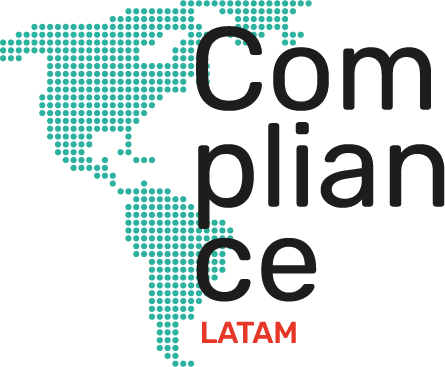
27-02-2024 | Noticias-en
On January 25, 2024, the Federal Trade Commission (FTC) announced a $2 million civil fine against a farm equipment company for violating the FTC’s Made in USA (MUSA) rule, the largest fine for violations. of MUSA to date. Here is what you need to know:
FTC Made in USA Rule
- The FTC regulates US origin claims in advertising and labeling under Section 5 of the FTC Act, which prohibits “unfair or deceptive acts or practices.” Claims of American origin may be expressed (e.g., “Made in the USA” or “Made in the United States”) or implied, that is, specific to the context and generally involving the use of American symbols, such as flags or references to US locations
- The MUSA Rule prohibits unqualified claims that a product, service, or component is manufactured in the U.S. unless: (1) final assembly or processing occurs in the U.S.; (2) all significant processing performed on the product occurs in the U.S.; and (3) all or substantially all ingredients or components are manufactured and sourced in the U.S. Both express representations that the products are “made,” “manufactured,” or “constructed” in the U.S. and representations implied fall within the scope of the Rule.
- The FTC began imposing larger civil penalties in 2020, indicating that violations of the MUSA Rule would face stricter enforcement. Although the FTC’s enforcement of MUSA violations remains slow (the FTC only brought four cases in 2023 that resulted in monetary penalties), this is the second sanction against a publicly traded company since 2020.
The order.
According to the FTC complaint, the farm machinery company labeled thousands of separately sold replacement parts for its products as “Made in the USA,” even though they were manufactured entirely outside the U.S. since at least 2021, the company allegedly packaged parts manufactured abroad. products in boxes with “Made in USA” printed.
The company is a repeat violator of the MUSA Rule. In 1999, the company entered into an Order with the FTC for MUSA violations, which expired in 2019. This prior application indicates that the manufacturer was aware of the MUSA Rule but failed to comply with it.
Under the latest Order, the company owes a $2 million civil penalty. The Order also requires the company to cease its deceptive labeling practices and creates compliance monitoring and recordkeeping and reporting obligations for the company.
Food for take away
Consider “qualified” MUSA claims . Given the very high standard applicable to non-qualified US origin claims and the increasingly real risk of financial penalties for non-compliance, the use of qualified US origin claims is sometimes more appropriate and worth considering. Examples of permitted qualified claims include: (1) claims indicating the existence of foreign content (“Made in the USA with American and Turkish parts”); (2) claims specifying the amount of US content (“50% US content”); and (3) statements indicating the presence of imported parts (“Made in the USA from imported cotton”).
We hope that the real threat of sanctions will encourage others to report false or misleading claims about American origin. If companies are concerned that their competitors are engaging in deceptive labeling practices, they can file complaints with the FTC. The FTC prioritizes enforcement against willful, repeat, or egregious violators.
For more information contact:

Jeffrey Lehman | Partner Miller & Chevalier | jlehtman@milchev.com

20-09-2023 | Noticias-en
Through the new External Circular No. 100-000003 of September 11, 2023 (the “Circular”), the Superintendency of Companies issued the guidelines of the new Report 75 – SAGRILAFT AND PTEE, which unifies reports 50 – Risk Prevention LA/FT/FPADM (“SAGRILAFT”) and 52 – Transparency and Business Ethics Program (PTEE), as well as Report 58 – Compliance Officers.
The foregoing, considering that Chapter obliges all legal entities subject to inspection, surveillance and control to adopt a PTEE.
The reports indicated in the Circular are mandatory for the Obligated Subjects, and must be completed through the STORM USER web application, in the “Business Report Submission” Section.
REPORT 75 – SAGRILAFT AND PTEE
The Obligated Subjects in accordance with the provisions of Chapters (Report 50 and Report 52) as had been done in previous years.
This single report must contain the SAGRILAFT AND PTEE reports, and must be submitted annually in accordance with the last two (2) digits of the NIT of the Obligated Subject, without including its verification number. In this way, the corresponding dates are the following:

These deadlines cannot be extended.
Without prejudice to the above, and considering that these dates have already passed for the year 2023, the Circular has special deadlines to present Report 75 – SGARILAFT AND PTEE with a cut-off date of December 2022. These dates, also established in accordance with the two (2) last digits of the NIT of the Obligated Subject, not including its verification number, are the following:

It is reiterated that these dates have been set only for the 2023 cut-off report, and that in subsequent years the calendar presented in the previous point must be complied with.
REPORT 58 – COMPLIANCE OFFICER
In accordance with the provisions of Chapters In the event of appointment or change of the SAGRILAFT Compliance Officer and/or PTEE, the Obligated Subject must present Report
58 within fifteen (15) business days following the respective appointment or change, with a cut-off date corresponding to the date of the act. of appointment.
When sending Report 58, the following documents must be attached:
1. SAGRILAFT Compliance Officer:
to. Compliance Officer Resume
b. Certification of compliance with the requirements to be appointed Compliance Officer
c. A copy of the document that accounts for the registration of the SAGRILAFT Compliance Officer before the SIREL administered by the UIAF.
d. A copy of the extract from the minutes of the Board of Directors or Highest Social Body that records the designation of the Compliance Officer e. Document that accredits knowledge of ML/TF risk management or ML/TF/FPADM risk through specialization, courses, diplomas, seminars, conferences or any other similar matter.
F. Certificate of verification of disabilities and incompatibilities of the Compliance Officer signed by the legal representative
2. PTEE Compliance Officer:
to. Compliance Officer Resume
b. Certification of compliance with the requirements to be appointed Compliance Officer
c. Document that certifies knowledge of risk management
d. A copy of the minutes of the Board of Directors or Highest Social Body stating the designation of the Compliance Officer
e. Certificate of verification of disabilities and incompatibilities of the Compliance Officer signed by the legal representative. Report 58 will only be understood as received if it is accompanied by the presentation of all of the aforementioned documents.
For further information, contact:

Oscar Tutasaura | Partner Posse Herrera Ruiz | oscar.tutasaura@phrlegal.com






